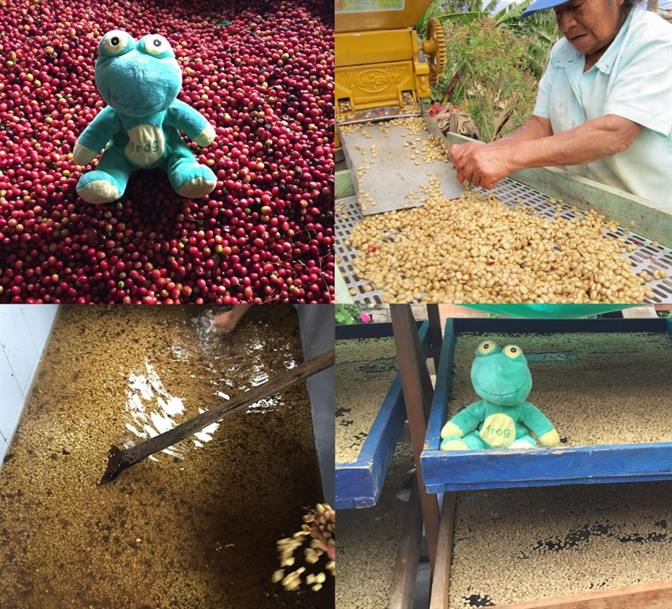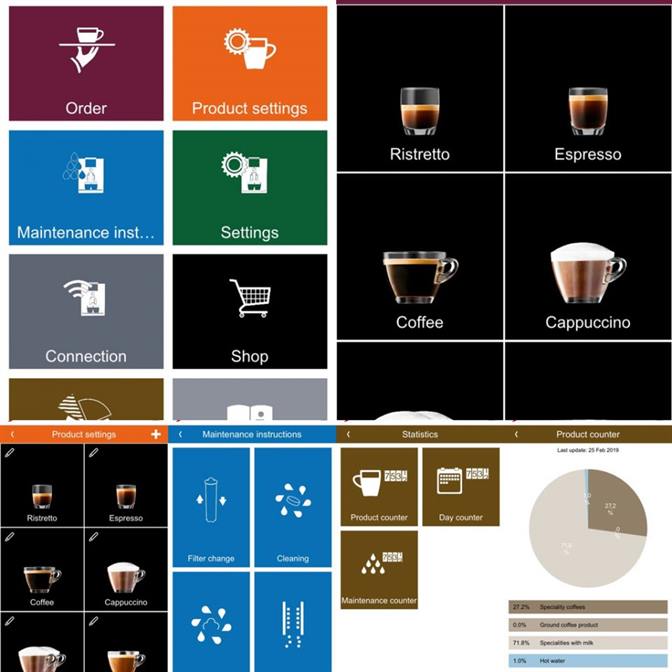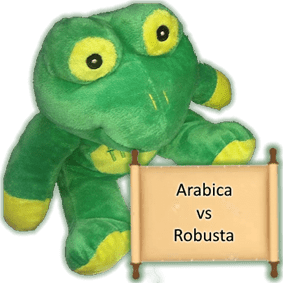With almost a quarter of 2019 behind us, we felt it might be a good idea to catch up with all our newsletter subscribers.
What we cover
In the newsletter, we continue with our discussion on coffee processing from the last newsletter in December and summarise the wet process. Then discuss old, new and future coffees. We will mention revisiting an origin we have offered before. We will touch base on the “secret” coffee. And then discuss a product that has impressed us.

Wet Processing / Washed Process
The wet processing method of extracting the seed (bean) from the coffee cherry, is a modern coffee processing method. Initially, it started in coffee growing areas near springs, where water was abundant. However, the clean tasting coffee it produced meant that its popularity spread. There are many types of wet processes implemented today, but we will cover the common elements.
While harvesting should ideally only select ripe coffee cherries, typically a second quality check is required. There are two approaches here. Either a group of harvested coffee cherries are covered in water, and only those that sink are de-pulped. Or an alternative is that cherries are de-pulped with water as part of the process, the remaining pulp and pips that sink are then separated from and those that float.
Either way, the floaters are considered to be unripe or damaged (by insects, fungus or disease), and those that sink are of a higher quality. Some countries (like Colombia) floaters will either be dry-processed or used for local or commercial consumption.
Depending on the country, both these qualities may be then covered in water, to ferment sans air (or anaerobically). Once the remaining mucilage around the pip, starts to separate from the pip, the resultant combination is rewashed. This can either occur in long washing channels (typically African coffees are processed like this), or in a separate washing container.
A resulting “washed” coffee, is then dried until a desired internal moisture percentage occurs (this depends on the country too).
Washed coffees are known for their brightness and cleanness in the cup.
Current and future coffees
We have been offering the Honduran Erapuca for almost four years now. While we are keen to support farmers through thick and thin, we have decided this is the last we will see of the Erapuca, at least for now. While the coffee quality has slipped, we are taking this opportunity to explore a relationship with an alternative origin.
Our new Kenyan, Makwa coffee has been available for about three weeks. Its stronger body or heavier mouthfeel has made it popular with those that enjoy a fuller bodied coffee with subtle fruit notes.
Shipment issues have delayed two new coffees. One is from Guatemala, and the other is from Nicaragua. Please watch the social media feeds or when these will be available.
On a sadder note, for the first time in 5 years, we were unable to secure any coffees from the 2018 crop of Long Miles Coffee Project. So, the current Gishubi will be the last offering from this popular project, at least until 2020.
Mexico
Frog Quaffer is off to Mexico in May. We have always enjoyed Mexican coffees which we have been able to source, and now we are looking at taking this origin seriously. With our long-time partners Caravela, now well established there, we are super keen to offer coffees from this origin. As we always do when we travel, we will post when we can from origin.
Secret Coffee Series
We have had some exciting coffees as part of the offering. However, the last few coffees have been on the expensive side. Since a significant amount of these coffees are still in stock, we are going to take a break from sourcing these unique coffees. We will take a break and then re-offer those we are not finished.
We have been looking for special coffees, from Jamaica, Hawaii and China; however, the costs are higher than our Yemeni coffees, and we are unsure if the risk to reward gamble is worth it, at this point.

Jura X8 and JOE
We seldom talk about kit. But over the last year, we have sold a few Jura X8’s, and we are impressed with this coffee machine. For the price, we believe there is no automatic coffee machine on the market close. The machine produces a coffee of a high standard and has been very reliable where we have installed one.
Also, this finally makes the JOE app that Jura released an asset. You can use the app with any modern Jura (from the E6 and up). With the app, you can see the status of the machine at any time, make your own recipes, and store them, create a queue of beverages to be prepared, and view stats on the machine.
For an office or hospitality environment, this machine really should be considered.



